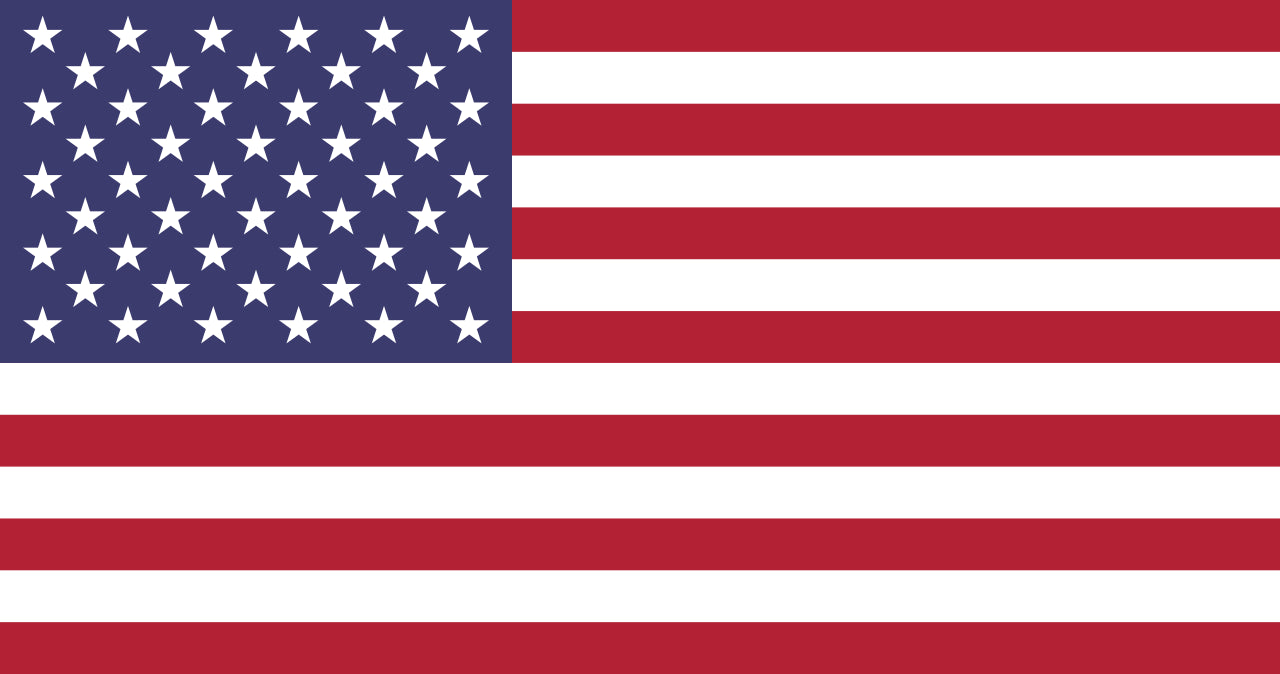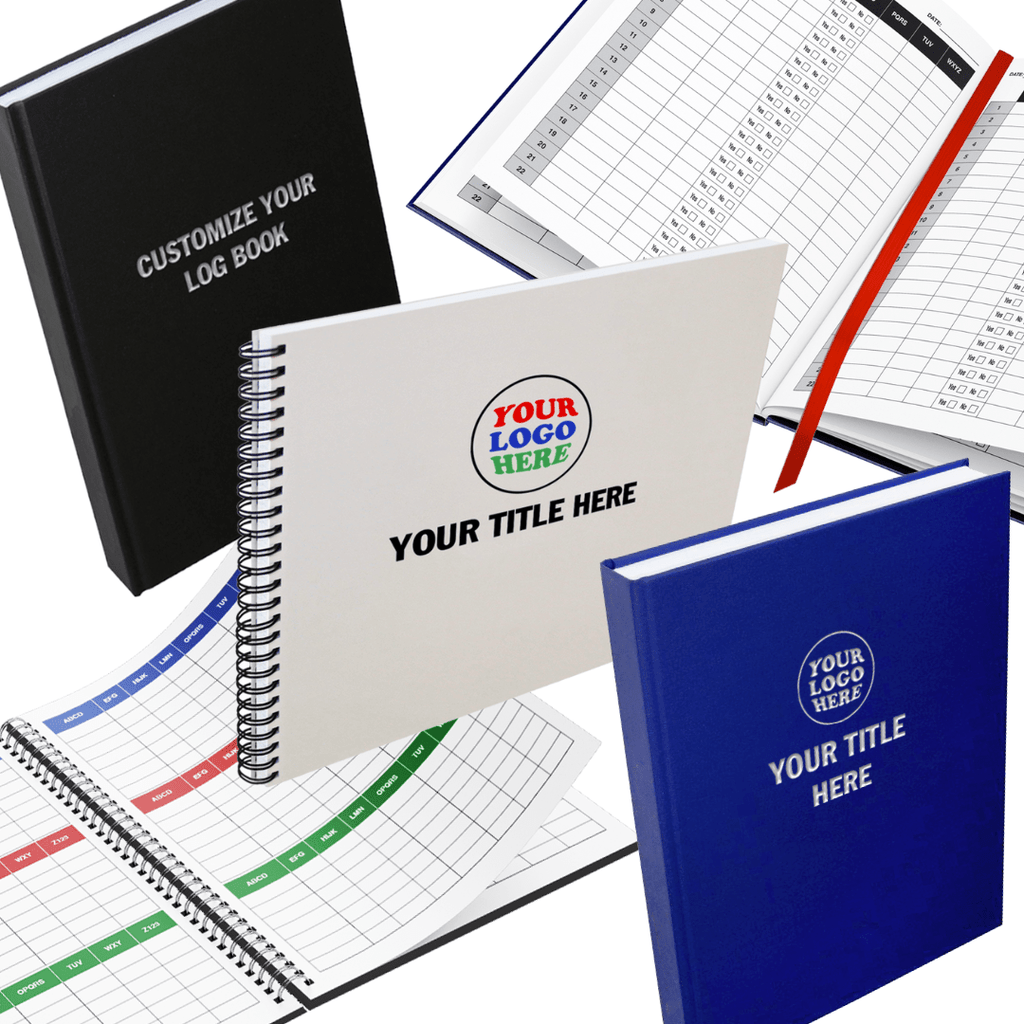This guide is designed to help you with our Custom Log Book Quoting Form.
It is a helpful tool for anyone looking to design a custom logbook. In this guide, we will consider various aspects of creating a personalized logbook, including different types of binding, book sizes, paper types, cover options, and more.
Binding Types
We offer 4 types of binding:

- Casebound - Hard Cover: The pages are sewn together in sections and then glued to a flexible spine. The cover will be made of thick board which is wrapped in a cover material. This is the most popular type of binding for a log book since it is one of the most durable binding methods. When looking for legal assurance, a hardcover book is really the one and only choice.
- WireBound: Twin metal loops in wire-o bound book are one long piece of wire formed into individual loops. These loops are hooked into each hole and then mechanically clamped together with the "seam" inside the back cover. Twin-loop metal coils enable users to turn pages 360 degrees and lay the book completely flat. WireBound books are generally more affordable. If you keep notes for internal purposes only, or there is no legal reason to go for hardcover, WireBound could be a more economical choice.
- Saddle Stitch: Interior pages are folded and inserted between the cover, then stapled along the “spine” edge.
- Wrap Around: Heavy stock paper that wraps around a booklet of carbonless copy forms. The cover starts at the top of the back, wrapping all the way around the length of the forms and back up to the front to the perforation at the binding stub.
Book Size
The size of the log book depends on its intended use. If you need a log book to be frequently carried around then you may want to go with a smaller size log book. It is generally advised to fit the inspection procedures and details of at least one full day or shift on one page to keep things organized; which sometimes requires a book as large as 12” x 18”.
Some of the popular sizing options include:
- Digest (5.5 x 8.5 in)
- US Trade (6 x 9 in)
- US Letter (8.5 x 11 in)
- Legal (8.5 x 14 in)
- Executive (7 x 10 in)
- A3 (11.7 x 16.5 in)
- Tabloid (11 x 17 in)
- Arch B (12 x 18 in)

Even though these mentioned sizes are provided, your options are not limited to them! Please contact us for a custom sizing, and we will be happy to accommodate your request.
Learn more about different paper sizes here.
Binding Side
The orientation of your book - portrait or landscape - also depends on the page layout you've designed. Will the pages be primarily filled with vertical note-taking, or do they need to accommodate wider, horizontal content? It's best to finalize the page design before determining the overall book size and orientation.

Paper Type
The type of paper used can impact the overall quality and functionality of your logbook. We typically suggest using a 70lb. paper that has a super smooth finish, which is great for ink holdout and easy to write on. Products printed on 70lb. paper will often have a high brightness and a high level of opacity, creating a premium feel. However, we do offer a variety of other papers and if you have something else in mind we are here to accommodate and push the boundaries of traditional styles.
Check out our Useful Information Page - Paper Types/Thickness for more details.

Ink

We offer two primary ink options - premium black, as well as premium colour.
For standard logbooks, we typically recommend selecting the black and white ink. This is the most common and cost-effective option, providing clear, high-contrast text and imagery that is easy to read and write with.
However, if your logbook includes more complex details, illustrations, or graphs, the premium colour ink may be the better choice.
Cover Types
The colour options available for your log book will depend on the binding type you select at the very beginning of the design process. The colour of a hardcover book, for example, comes from the material in which the cover is wrapped, and therefore the choices are limited to the materials we have available.
Some of the material options we provide include:
- Tanotex
- Buckram (OBV)
- Milbank (Linen & Vellum)
- Kivar 7

To see all available colour options, please visit our Useful Information Page - Cover Materials.
Stamping (For CaseBound Books Only)
When ordering a hardcover log book, you can choose to have the title displayed on the cover, the spine, or both.
If your books will primarily be stored on a shelf, with only the spine visible, you may want to opt for having the title printed on the spine.
Alternatively, if the book will be displayed or frequently opened, placing the title on the cover may be the better choice. This makes the content more immediately visible and accessible.
It's important to note that additional stamping or embossing on the cover or spine will slightly increase the overall cost of your hardcover logbooks. However, when ordering in larger quantities, the incremental cost difference is minimal.

Sides Per Sheet
Based on your needs you may require one page per day for a year, for a number of months, or just a round number of pages such as 100 or 200, purely for convenience.
In addition to the total page count, you'll also need to consider whether you want single-sided or double-sided printing. A single-sided page means there will be a blank page on the reverse side of each sheet of paper. This can be useful if you plan to use heavy inks, markers, or have other special considerations that require extra paper weight or opacity to prevent bleed-through.
However, in most cases, double-sided printing is the more practical and cost-effective option. Our log books are printed on high-quality, 70lb paper that is designed to prevent ink bleed-through, even with standard writing utensils. By utilizing both sides of the page, you can maximize the available space and create a more compact, efficient log book.
Interior Pages
The layout of interior pages of your logbook should be intuitive and simple to navigate. Consider whether you prefer to record one shift per page or multiple shifts per page. Decide on the type of information that should be recorded in the logbook. This may include maintenance schedules, completed tasks, parts replaced, observations, and any other relevant data points.
If you have any samples or additional information please provide them to our Art Department and they will create PDF Proofs. If you aren’t sure where to start we can also provide you with some digital samples.
We can work with a variety of file types including: excel, word, pdfs or even a rough scribble on paper.
Conclusion
Designing the perfect custom log book is all about understanding your specific needs and preferences. From the choice of binding and cover material to the page count and printing options, each decision plays a critical role in creating a final product that is both visually appealing and highly functional.
By taking the time to carefully consider the various factors covered in this guide, you can ensure your log book not only meets your practical requirements, but also elevates the overall experience of using it day-to-day. Whether you require a classic, text-focused layout or a more dynamic, visually-rich format, our team is here to provide the guidance and expertise needed to bring your vision to life.
Ready to create your personalized log book? Click here and fill in the order form!



